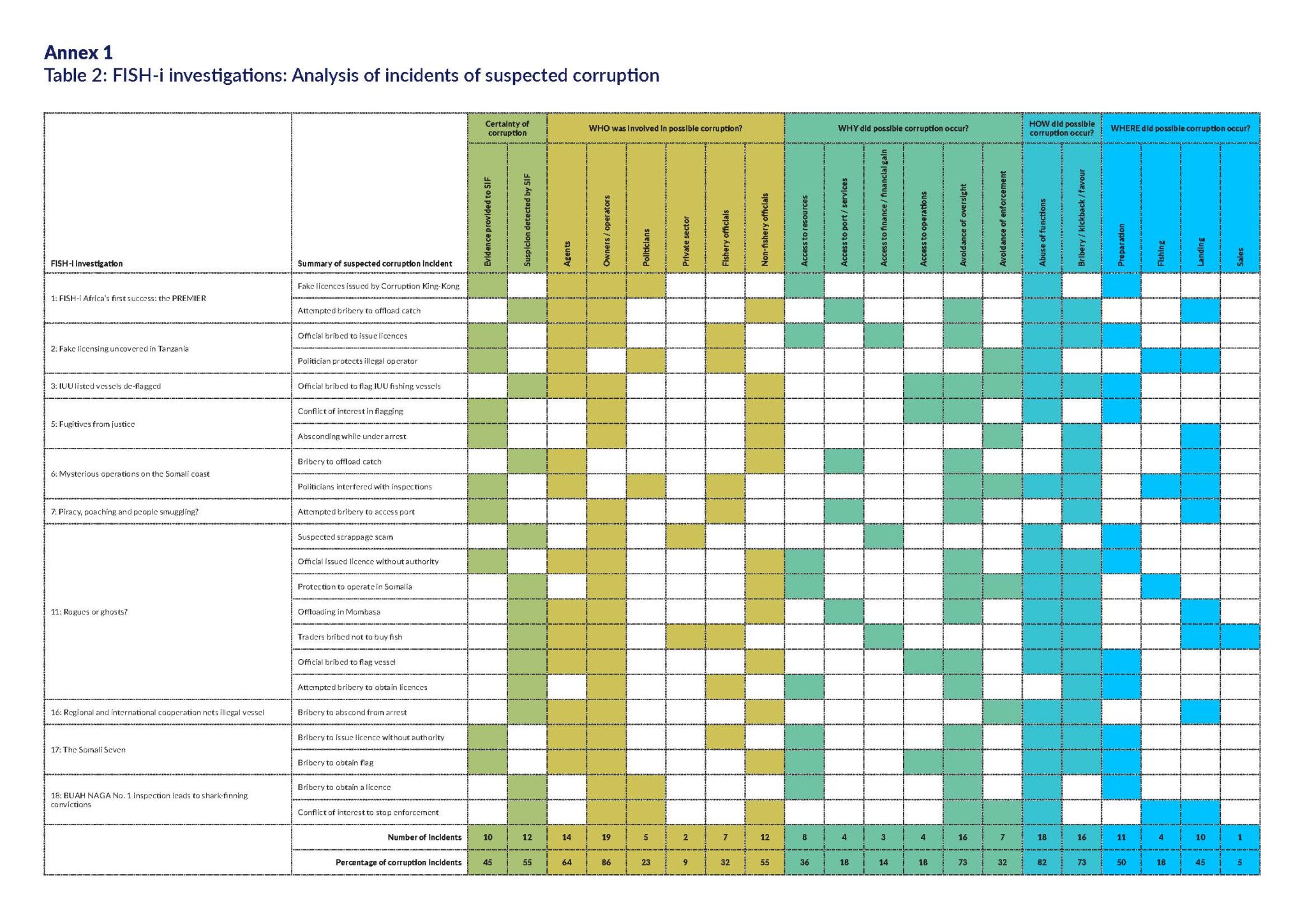Report
Corruption as a facilitator of illegal fishing: Insights from East Africa
Corruption, defined as the abuse of entrusted power for private gain, when occurring in connection with fishing, or the wider fishery value chain or fishery sector, is considered a fisheries crime. Corruption threatens the effectiveness of regulatory frameworks governing fisheries resources, and therefore facilitates IUU fishing. The fishery sector has specific characteristics that make it vulnerable to corruption; these include the global transnational nature of the industry and the lack of transparency within it, and the scarcity of fisheries resources.
Analysis of industrial illegal, unreported, and unregulated fishing in East Africa reveals it is often facilitated by corruption. Evidence suggests this occurs through the abuse of power and position by ‘kingpins’, who regularly wield control through intimidation and sharing the spoils of corruption within established networks. This enables corrupt industry players to secure illegal access to fishery resources and services and protection from oversight, investigation, and enforcement.
Main points
- Corrupt networks headed by political or senior civil servant ‘kingpins’ facilitate illegal vessel registration, allocation of fishing licences, and access to ports and port services.
- Alleged corruption incidents potentially represent transnational organised crime, involving multiple countries and a range of different public bodies, such as maritime, port, and fishery authorities.
- Lack of interagency cooperation and information exchange can result in unclear institutional responsibilities, creating gaps in jurisdictions that can easily be exploited by corrupt operators.
- Fishery agents, who provide services for vessel owners, are active in orchestrating corrupt practices across the region. They link up corrupt players, offering them protection, and pay bribes and arrange kickbacks.
- Fish that is caught illegally – often facilitated by corruption – is likely to be whitewashed into the legitimate value chain if the illegal activity is not detected before the catch is transhipped or landed.
- Approaches that may disrupt corruption in fisheries include: strengthening on-the ground anti-corruption capacity; fostering national interagency cooperation and increasing international cooperation; improving oversight of fishery agents; and, supporting regional monitoring, control and surveillance centres and task forces.
Drawing from analysis and research into 20 published FISH-i Africa investigations, the report aims to encourage discussion and awareness about corruption from an MCS perspective. Ten of the investigations were identified by SIF as having an indication that corruption linked to the IUU fishing may have taken place. A total of 22 possible incidents of corruption were identified within the ten investigations.

The investigations explored if there was any evidence, or suspicion of corruption having occurred. In both scenarios, the analysis then considered how the corruption occurred, where, why, and by whom. As a result of this analysis, we have proposed possible anticorruption activities as solutions that aim to reduce the occurrence of fisheries corruption and, likewise, the occurrence of IUU fishing.
Approaches that may disrupt corruption in fisheries include strengthening on-the ground anti-corruption capacity; fostering national interagency cooperation and increasing international cooperation; improving oversight of fishery agents; and supporting regional monitoring, control and surveillance centres and task forces.
The full text can be access on the U4 website.
The report is available to download in English and French.
Credits
U4 is a team of anti-corruption advisers working to share research and evidence to help international development actors get sustainable results. The work involves dialogue, publications, online training, workshops, helpdesk, and innovation. U4 is a permanent centre at the Chr. Michelsen Institute (CMI) in Norway. CMI is a non-profit, multi-disciplinary research institute with social scientists specialising in development studies.